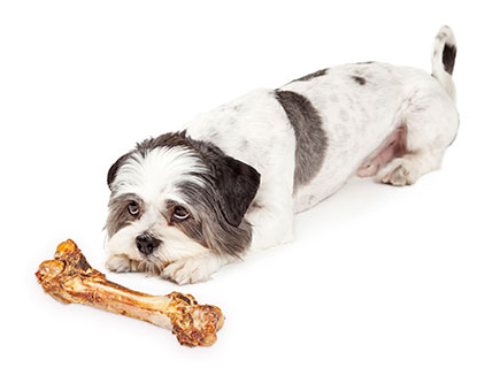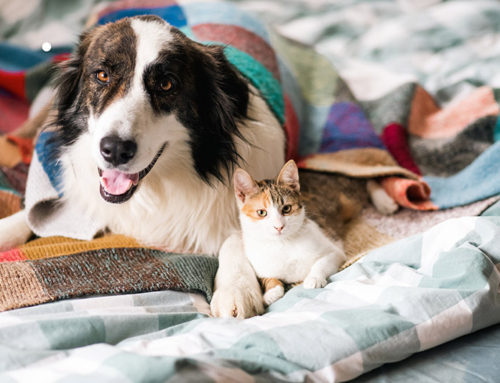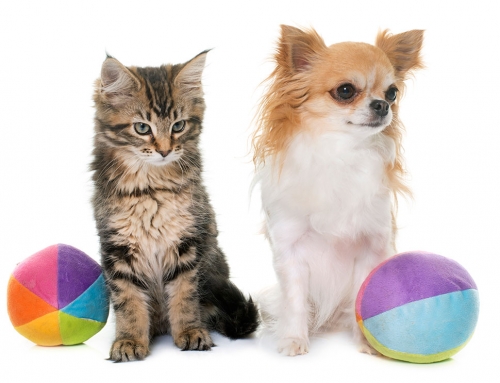 PUPPY PREPAREDNESS
PUPPY PREPAREDNESS
- Necessary supplies include bed and bedding, a sturdy dog carrier or crate, food and water bowls, brushes and combs, appropriate collar, harness and leash, and identification tags
- Puppies use their mouths to explore all new things and will be tempted to bite and chew on almost anything they can get their mouth on to provide them with plenty of toys to chew on and play with.
- Ideally, your new puppy should be examined by a vet before you bring it home, but if this is not feasible, have your pet examined as soon as possible prior to introducing it to any other animals.
PUPPY PROOFING
- Before bringing your new puppy into your home you will need to puppy proof your house, garage, basement, and yard.
- Keep in mind the lower vantage point that puppies have. They’ll be attracted to things you won’t see when standing, so you need to get down on all fours and look through their eyes. This way, you’ll see things at your pet’s level and not overlook anything.
- Everyday dangers to puppies include plants, household garbage, food, cleaning substances, swallowable objects (this includes anything small enough for them to get a hold of), electrical cords and wires, curtain and drapery cords, plastic bags, shoes and clothing, children’s toys and items, medicines, open fires, open doors, balconies and raised decks, pools and ponds, unsupervised small children, and other pets.
- Keep toilet lids, dresser drawers, trunks, and closets closed.
- Be careful when closing your refrigerator, oven, washer, or clothes dryer to make sure your puppy is not inside.
- Keep sewing supplies out of reach and never leave a hot stove unattended.
- Block off stairs and ledges with a baby gate.
- Keep poisons and all medications in a locked cabinet or room that your pet can’t access.
- Examine your house and furniture carefully for small holes, gaps, and spots where a small animal could squeeze into and get stuck.
- Watch out for heavy objects placed on unstable bases, such as an iron on an ironing board.
- Keep a watchful eye on them and know its whereabouts at all times. Just like you wouldn’t let a toddler run around the house unsupervised, so it should be with your puppy.
- Make sure you have a safe small room or crate in which to confine your pet when you’re not able to directly supervise it.
- Patience, confinement, and a regular schedule are the keys to successful potty-training. The more input your puppy receives, the faster it will be potty-trained.
- Dogs, because they are born in a nest, have an instinctive desire to move away from the nest to relieve themselves. They will do so without being taught, as soon as they are capable. The key with potty-training is to teach the puppy that your house is the nest and that it should relieve itself outside of the nest.
- It’s also important to recognize the physical limitations of puppies that are being potty-trained. Young puppies may need to eliminate every two to four hours during daylight hours when they are most active, but be able to hold it much longer at night. A simple rule of thumb to estimate how long a puppy can hold its urine is its number of months in age plus one. For example, a 2-month-old puppy can typically hold its urine for about three hours. There is a considerable individual variation on this, so you may need to get up in the middle of the night to take the puppy out to avoid accidents
Initially take the puppy outside to the same spot in your yard where you want it to eliminate at the following times:
- First thing in the morning
- Shortly after each meal
- At least once an hour
- After playing or exercise
- Immediately upon waking at any hour
- After any type of stimulation
- Last thing at night
- It’s important that you stay outside with your puppy. Be patient and wait. As soon as they begin to potty, choose a positive phrase and then praise them enthusiastically. If you’ve taken your puppy outside and nothing happens after a few minutes, take it inside and try again later. If you notice your puppy sniffing the floor or circling, interrupt it immediately and take it outside. Try not to carry it outside or it won’t get in the habit of walking outside to eliminate.
- If you’re unsuccessful, you must take your puppy to the vet to rule out any health problem that could be causing a failure in potty-training, such as a bladder infection or parasites.
- Crate training is one of the best ways to potty-train a puppy. Crates can also be used to prevent puppies and dogs from having the opportunity to be destructive or get into trouble when not supervised.
- The crate should be big enough for the puppy to lie fully stretched out on its side, tall enough for the puppy to stand, and wide enough for the puppy to easily turn around. However, the crate shouldn’t be so big that the puppy can become active. For large breeds of dogs it may be necessary to use more than one crate as they grow, or at least block off a part of a large crate at first with cardboard.
- One of the benefits of confinement is that it discourages activity, which can trigger elimination. When active movement is allowed, the puppy must be taken to the chosen site for elimination regularly. For very young dogs it’s desirable to take them to the elimination site once during the middle of the night until they can last through an entire night without having the need to potty.
- Start by having the crate accessible and leaving the door open. Place pieces of food inside and your puppy will quickly become very comfortable going into the crate. Crates are very natural for dogs because they fit into their den concept, and most dogs that have their own crates consider them a place of security, much like having their own bedroom.
- One of the most critical periods of development is called the socialization period, which occurs from 3 to 12 weeks of age in puppies. During this time your puppy is very impressionable with regard to social influences.
- Try some events that are pleasant and non-threatening. Invite friends over to meet your new puppy, including men, women, children, cats, and seniors. If your pet has good experiences, it’s likely to accept people throughout its life.
- Expose your puppy to as many types of social events as possible. With puppies, try to avoid dog parks, beaches, and other areas where there are a lot of dogs, as puppies less than 4 months of age are highly susceptible to disease.
- The first few weeks of a puppy’s time in its new home is so important in terms of socializing and bonding with humans and should be treated as a critical period in your relationship. This is the time for cuddling, holding, playing gently, and talking to your new puppy. You will be molding your pet’s personality while strengthening your own commitment to cherish it for life. It’s a symbiotic relationship.
- It’s important to make your puppy as sleepy as possible before it goes to bed, especially during the first few nights in its new home.
- Puppies will howl or cry when they’re separated from whatever they’re most attached to, and initially, this will be the mother and/or littermates. After you bring your new puppy home, this attachment quickly transfers to its new family.
- Confining your puppy at night is important.
- Withhold water for a least a couple of hours before bedtime, and make sure to take your puppy outside before bedtime.
- You can use a box or crate with a blanket or carpet in it. If your puppy is exhausted because it has had a busy day, it should settle down, relax, and go to sleep.
- If your puppy starts to howl or cry initially, don’t respond; if you do, it will learn that making noise is successful in getting attention and this will prolong the time it takes for the puppy to get used to being alone and sleeping at night.
- If your puppy awakens during the middle of the night, it may need to be taken outside in the beginning at least once to relieve himself.
- Puppies become infected with worms either before they’re born or later through their mother’s milk, so it’s important to have their stool checked by your vet.
- Some veterinarians just routinely deworm puppies, as it’s very common for them to have parasites.
- A microscopic exam of the stool sample, called a fecal, will help determine if your pet has worms and what type it has. The fecal will also rule out other common parasites that can occur in puppies such as coccidia and giardia.
- Your veterinarian will prescribe the proper deworming medication, which is usually repeated.
- Puppies are vaccinated more than once because the antibodies they receive from their mothers at birth and in their milk, which wane over time, interfere with the puppy ability to produce its own antibody response to a vaccine.
- The time at which these maternal antibodies lose their effectiveness is different for each puppy, so it’s important to start the vaccination series at 7 to 8 weeks of age.
- Puppies then receive a series of vaccines three to four weeks apart until they are 16 weeks old. After that, boosters are needed yearly for some vaccines and every two to three years for others.
- Spaying or neutering at an early age prevents unwanted pregnancies and protects your pet against tumors of the reproductive organs.
- Early neutering in males also improves behavior by reducing roaming, urine marking, and aggression between male animals.
- Neutered pets live longer than non-neutered pets, have no risk of testicular cancer or torsion, and have a greatly reduced risk of prostate disease.
- Female dogs that are altered before they have their first heat cycle, which is usually at 7 months, have at least a 90% decrease in developing breast cancer later in life.
- Spayed females have no risk of ovarian or uterine cancer or life-threatening uterine infections, and heat cycles and unpleasant behaviors are eliminated.
- You can have your puppy spayed or neutered as early as 8 weeks of age. It’s recommended that the procedure is performed before your pet is 6 months old.
If things don’t work out as expected most adoption places/shelters will take the puppy or dog back. If you bought from a breeder or a private party then it is up to you to find a suitable home for your pet. There are lots of rescue groups that take in pets that for whatever reason didn’t work out and this might be a better option verse surrendering it to a shelter. Social media can also be a great avenue to find a home. Some vet clinics will also help in finding the right home so it’s good to ask there as well.





